Fine Art
Recent auctions, including the recent Ann and Gordon Getty Collection, fetch staggeringly high prices
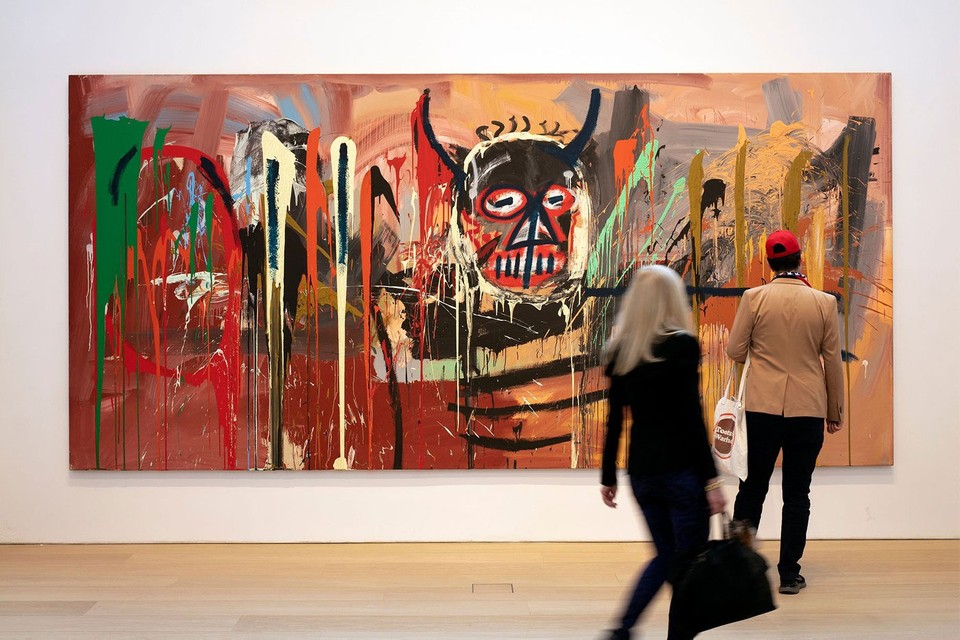
Jean-Michel Basquiat’s 1982 “Untitled” was sold for $79 million at a Phillips auction in May. The painting is 16-feet-wide.
Image courtesy of: Hyberbeast, photographed by: Neil Hall
Despite common sense, worldwide auctions are reporting staggeringly high numbers. Some of this might have to do with the fact that things are returning to normal after a virtual stop during the pandemic. Now, auction houses are recording a boom in sales thanks to both pent-up demand and a large supply of works. This seems contrary to popular belief at a time of worldwide political uncertainty, falling stock prices, security concerns, and soaring inflation. However the pandemic afforded a lucky bunch the chance to get wealthier and for others, post-pandemic feels like an opportunity to sell highly desirable works.
Better stated (courtesy of The Guardian) and presented by art market specialist and author Georgina Adam, “The rich have got much richer. And if you’re mega-rich, there aren’t that many things you can acquire that are real trophies, that nobody else can have. Art is a real trophy.” In continuation, art appears “as somewhere safe to put your money. At the top end of the market, the returns can be colossal. What other investment can offer these sorts of returns?”
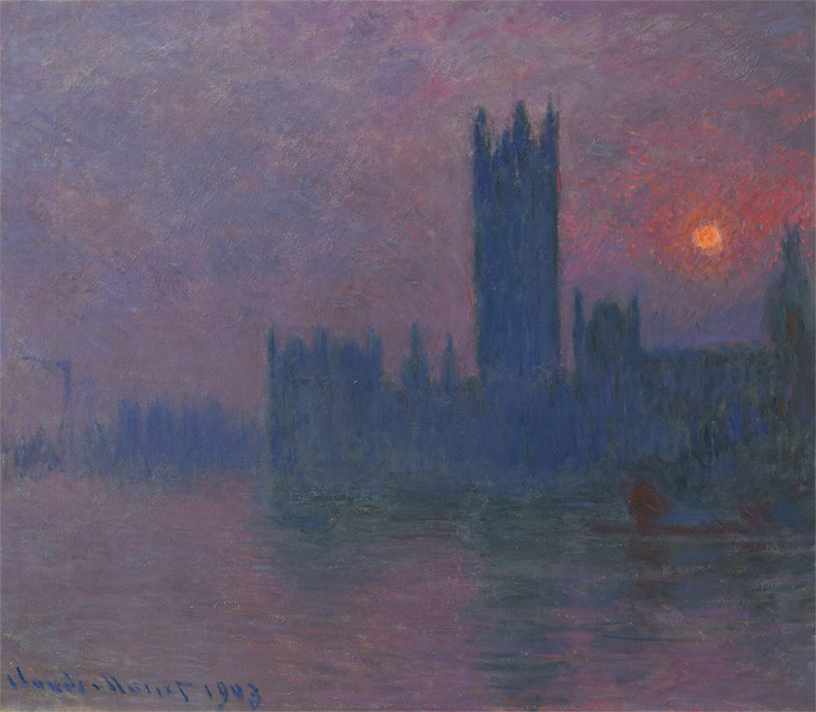
Claude Monet’s “Les Parlement, soleil couchan,” 1900- 1903. This painting is considered one of Monet’s finest images of London. Following a six-minute bidding war between seven bidders at a Christie’s sale earlier this year, the painting fetched $75,960,000.
Image courtesy of: Artnet News
Christie’s, for example, points out an altered post-pandemic “business model;” specifically, the auction house works hard so that collectors feel comfortable buying astronomically expensive pieces online. Christie’s has also been extremely successful at dissolving (courtesy of The Art Newspaper) “the barrier between 20th and 21st century art with its new sales formats and proselytized there millennial generation, that young, monied class who may start their collecting lives with Rolexes and Bored Apes, but may soon be bidding on works by Gerhard Richter, Anna Wyant and Issy Wood.”
Christie’s reported an astonishing $4.1 billion in sales for the first six months of this year… an 18% jump in comparison to last year. Interestingly, figures report that prior to the world shutting down, 10,000-15,000 clients would watch the company’s auctions. This year however, that number jumped to 800,000-1,200,000 and figures report to a younger group of interested parties and collectors.
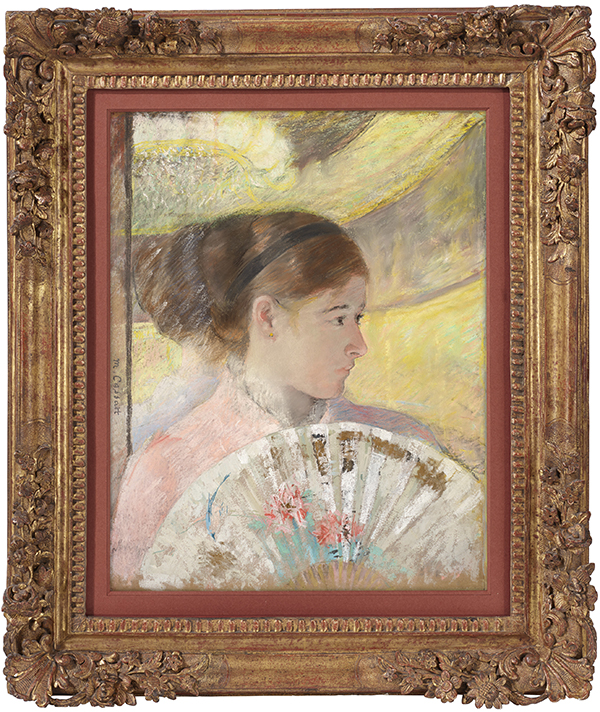
Mary Cassat’s “Young Lady in a Loge Gazing to Right.” The painting was bought for almost twice the prediction.
Image courtesy of: Christie’s
One of the season’s most anticipated auctions was the recent Ann and Gordon Getty Collection Sale. The four-day event was inclusive of pieces at the couple’s legendary San Francisco home. For weeks prior to the sale, artisans worked to transform Christie’s New York headquarters in Rockefeller Center into a replica of the Getty’s former West Coast home. 1,500 items that were once housed in the California home were staged in preparation for the auction where the proceeds would be donated to art and music initiatives through the Ann and Gordon Getty Foundation for the Arts.
Among the objects were paintings by Monet and Manet and furniture once owned by European royalty. For example, Mary Cassatt’s “Young Land in a Loge Gazing to Right” was uncrated, wheeled-in, and hung at the staged space. The sale also included two silver-gilt and Sèvres porcelain ice buckets commissioned by Napoleon Bonaparte. In particular, the Cassatt painting was expected to fetch $3 million to $5 million, but it set a record of $7.5 million for the 82-year-old American painter. The painting will now go abroad as the work was acquired by the Pole Museum of Art in Japan.
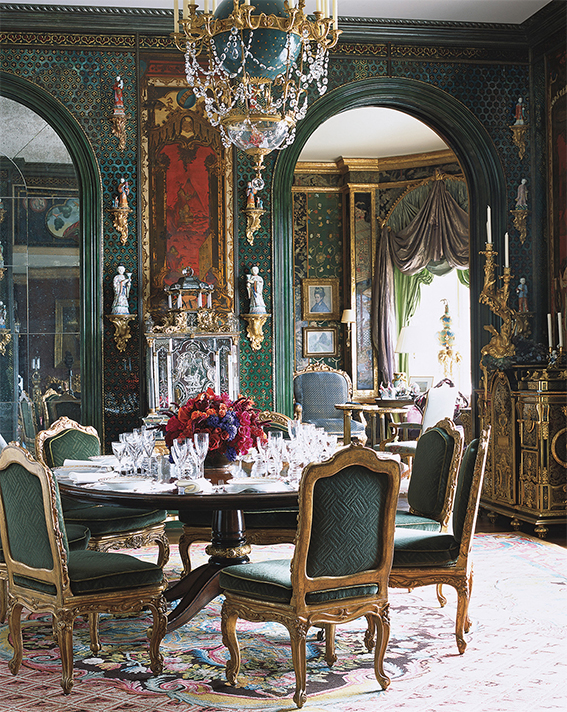
Inside the Getty’s San Francisco mansion. Photographed are Eight Louis XV chairs by FOLIOT circle the Regency-style dining table.
Image courtesy of: Magazine C
The couple bought the five-story mansion in 1976, following the death of Gordon’s father, J. Paul Getty, the American-born British petroleum industrialist who founded Getty Oil Company in 1942. Upon the matriarch’s death, the couple’s wealth grew substantially. In order to decorate the home property, Ann Getty hired Parish-Hadley, (courtesy of Tatler), “the ‘blue-chip’ firm credited with the design of the Kennedy White House, as well as homes of other prominent American families including the Astors, Rockefellers and de la Rentas. Perched atop Pacific Heights, with views of San Francisco Bay, it sits on a stretch of Outer Broadway – the bastion of San Francisco’s ‘old money’ families.”
Ann spent months jetting between California and England in order to take advantage of London’s elite auction houses and antiquaries. She quickly became a top customer and was effectively successful at transforming the Outer Broadway mansion into an “English-style country house.”
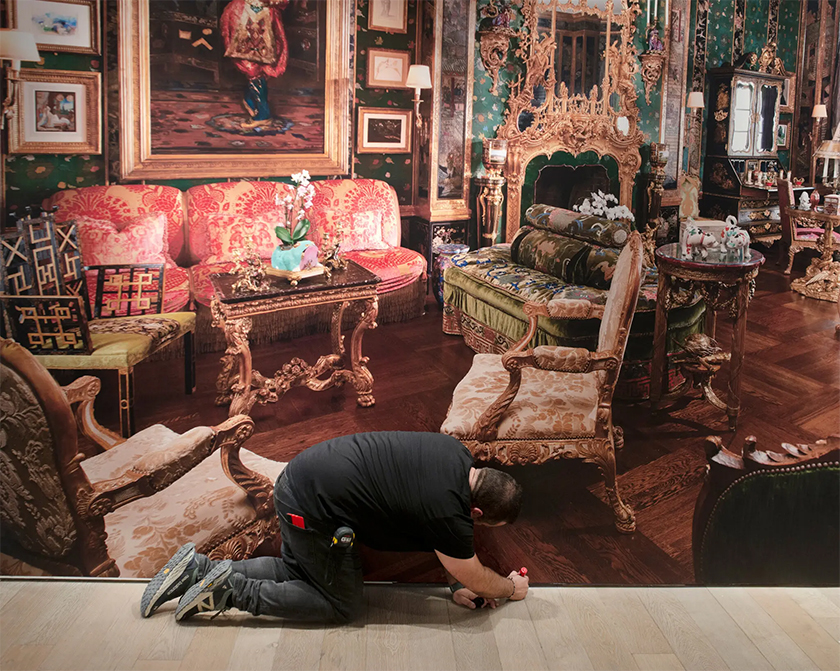
Gordon Getty, 88-years-old, said in May, “My wife had this gift for the visual arts and me an interest, whether or not a gift, in the ear arts;” he was a lover of classical music and composing. He further added, when asked about the 1,500 pieces going to auction, “There’s no reason to me having all that stuff. About everything sellable is going to be sold. I don’t think I reserved a darn thing for sentimental reasons.”
Image courtesy of: The New York Times, photographed by: Elliott Verdier
Following the October auction, Christie’s noted that the collection achieved more than $150 million across four live and six online auctions. This incredulous number makes the auction one of the top three highest grossing collections of decorative and fine arts ever sold at Christie’s.
Ann Getty once said (courtesy of The New York Times), “I like things on things.” and “I love the hunt.” And about her unique style, she said, “Too much harmony tends to be less exciting.” Jonathan Rendell, deputy chairman of Christie’s Americas, was quoted as saying about her, “Very rarely do you find a collector who is as truly original as Ann Getty, who has bravery to do things that no one else would dare to do, because she could live with it. And if she didn’t like it, she could change it, which is a great way to be.”


